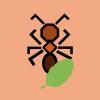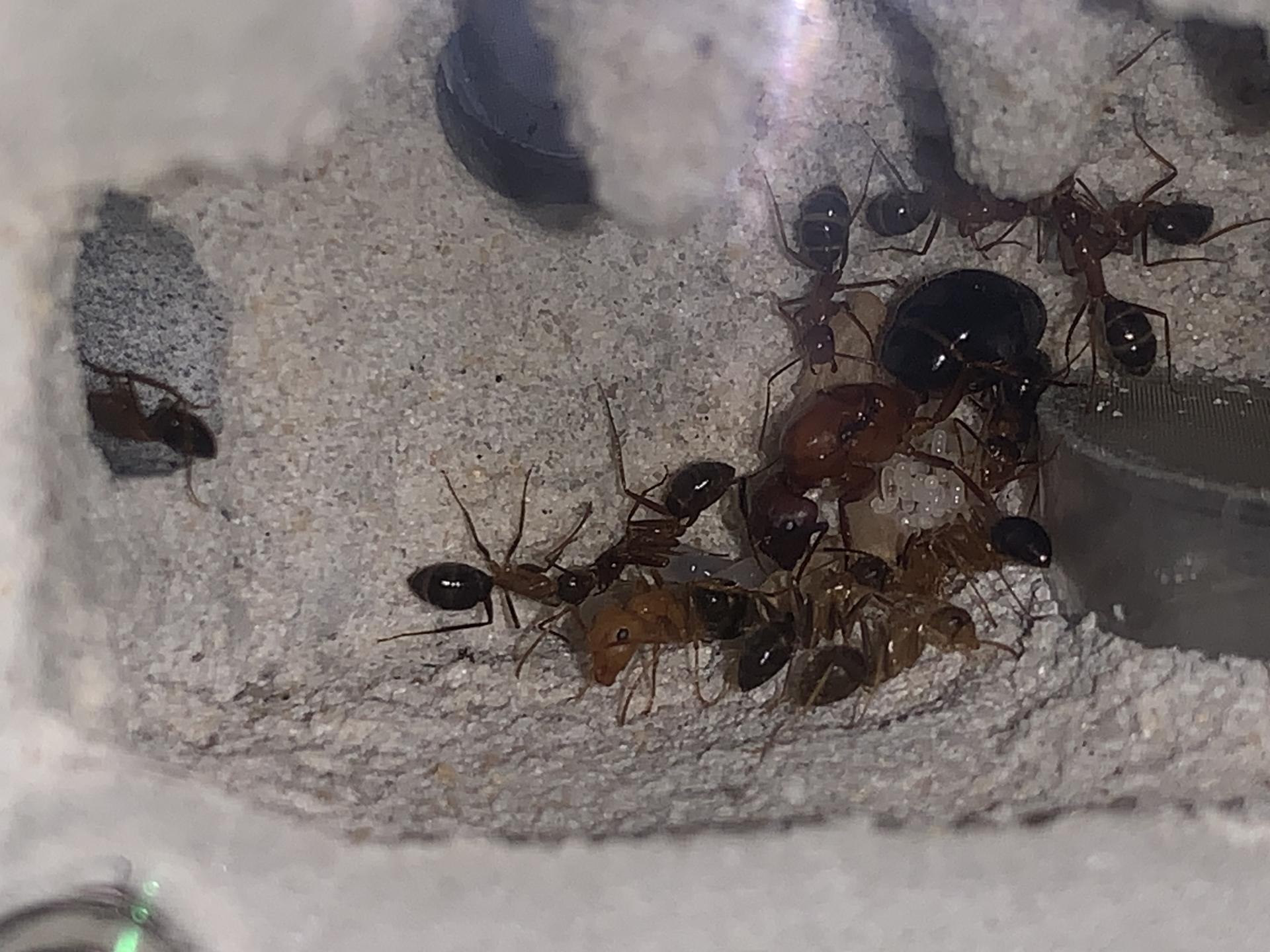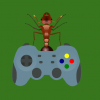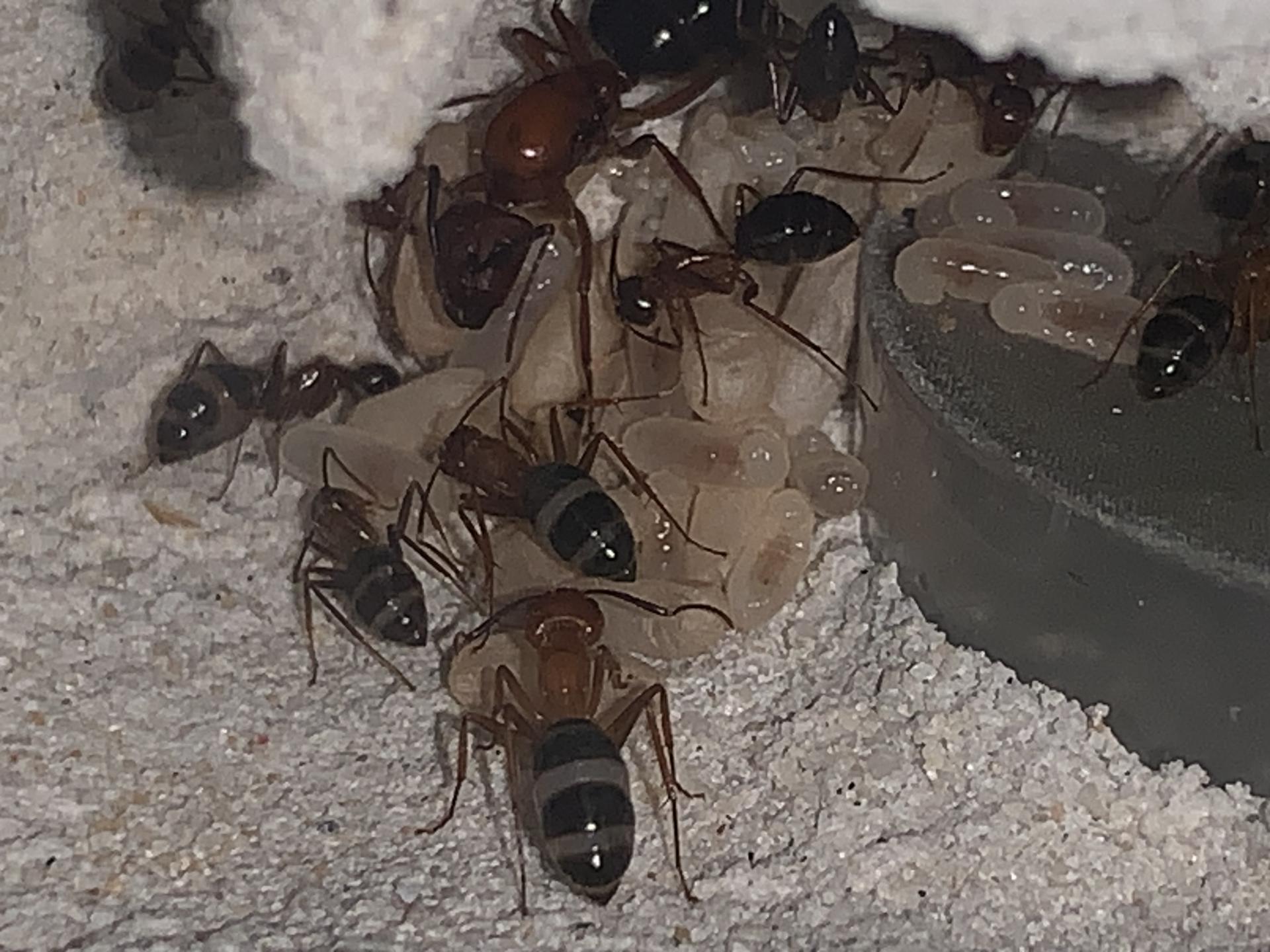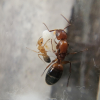This is my first ant colony and C. floridanus seems to not get a lot written about them so I thought it might be useful to write this journal.
I got interested in ant keeping during the winter so there were not a lot of in-stock options for ant species. Out of the available choices I picked C. floridanus because they didn't need diapause, they are somewhat large, and they don't have any stingers or other traits I perceived as negatives. My goal was to have a colony I could keep on my work desk in order to watch them while I'm working, so it was important that they wouldn't be taking 3-4 months of the year off. Also, most Camponotus species are slow growing and C. floridanus is considered to reproduce fast "for a Camponotus" so I won't have to wait as long to see the colony grow. They aren't quite as big as most Camponotus though.
For housing I got a Tarheel Mini-Hearth and when I hooked up their test tube they moved in after a day or so. This is a formicarium with a lower nest and upper outworld connected by a short tube. The initial colony was the queen plus 8 workers.
As with all beginners, there are mistakes and learning curves. I lost one worker that got stuck and drowned in a drop of honey. Now I know that it needs to be watered down. I try to rotate between sugar water, honey water, and the ant food powder I got from Tarheel.
For their protein I first bought some small crickets at Petsmart but I ran into an issue where they shoved the remains in a corner of the nest rather than throwing it away in the outworld where it's easy to pick up. After a while I noticed it was growing some sort of green mold on it, and fortunately was able to slide the front glass out of the way to clean it out with a Q-tip without any escapes. Since then I have switched to medium Dubia which conveniently are too big to fit down the tube so they have to eat them in the outworld and this has simplified cleanup. I have been told that when they have more workers they will be less inclined to leave remains in the nest but I like to play it safe - I've heard that mold can sometimes kill a colony.
After this things were going well, there are 8 pupae that I'm waiting to see them hatch into new workers (which would bring me to 15) and a pile of eggs as well. I generally shine a light or take a cellphone pic every day or so to see how the brood is looking.
This morning we had a new problem. I was doing maintenance, which was refilling their humidity water, giving them new honey water, and swapping out the eaten Dubia for a freshly killed one. Several ants smelled the Dubia and came out to get it. They tried lifting it to carry down the tube (which won't work because it's too big) but in the process they dropped it in their sugar water "bowl" which is just a small piece of aluminum foil and overflowed all the honey water all over the floor of the outworld.
Talking to people in the discord, I was advised that I needed to clean this up or else it could grow mold or other undesirable stuff. Fortunately this wasn't hard. I just waited until everyone was in the lower nest, took everything out, and used an old 1" paintbrush to mop water all over and then blotted it up with a paper towel. I repeated this a total of three times and then put their stuff back in. To prevent this from happening again I'm moving their sugar water bowl further away from where I put the insect protein and I'll keep a close eye out for anything growing.
Other than a couple of minor bumps though, everything is going well and hopefully I'll be writing back soon with new of all the new workers hatching out.





